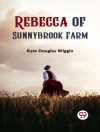Set in the quaint village of Cranford, Elizabeth Gaskell’s novel intertwines the lives of a group of spirited women as they navigate the intricacies of social change and community values in Victorian England. Employing a rich, descriptive prose style marked by keen observations and gentle humor, Gaskell crafts a tapestry of interrelated stories that explore themes of friendship, class, and the evolving role of women. The novel’s episodic structure reflects the rhythm of village life, offering a nuanced portrait of a middle-class society grappling with the consequences of modernization. Elizabeth Gaskell, a pioneering writer of the 19th century, drew inspiration from her own experiences in the industrial town of Manchester and her deep sympathy for the struggles of women in a patriarchal society. Her keen awareness of social issues and her relationships with her literary contemporaries, such as Charles Dickens, informed her portrayal of diverse characters, making them resonate with authenticity and emotional depth. Gaskell’s background in a liberal family fostered her writing, granting her insight into the complexities of human nature and societal expectations. ‘Cranford’ is an essential read for those interested in Victorian literature, exploring the intersection of gender and social change with grace and insight. Gaskell’s ability to evoke empathy through relatable characters makes this novel not only a delightful read but also a thought-provoking commentary on the lives of women in her era. Readers will find themselves charmed and challenged by the vibrant world of Cranford and its endearing inhabitants.
Sobre el autor
Elizabeth Cleghorn Gaskell, née Stevenson (1810–1865), was a prominent Victorian author and biographer noted for her acute observation of Victorian society. Born in London and raised in Knutsford, Cheshire, Gaskell’s early life in a rural town inspired much of her later work, including ‘Cranford’ (1851-1853), a witty and incisive portrayal of small-town life. Gaskell’s writing often tackled social issues such as class division, industrialization, and gender inequality, which were groundbreaking themes for a woman writer at the time. Among her notable works are the industrial novel ‘North and South’ (1854) and the social novel ‘Ruth’ (1853), which addresses the harsh treatment of fallen women. Her biographical account of her friend, ‘The Life of Charlotte Brontë’ (1857), remains a seminal work in literary biography, offering a sympathetic yet honest portrayal of the ‘Jane Eyre’ author. Gaskell’s ability to address complex social issues with a blend of humor, empathy, and stark realism has ensured her place in English literary canon, and her work continues to be celebrated for its detailed, lively characters and vivid depiction of Victorian life.












